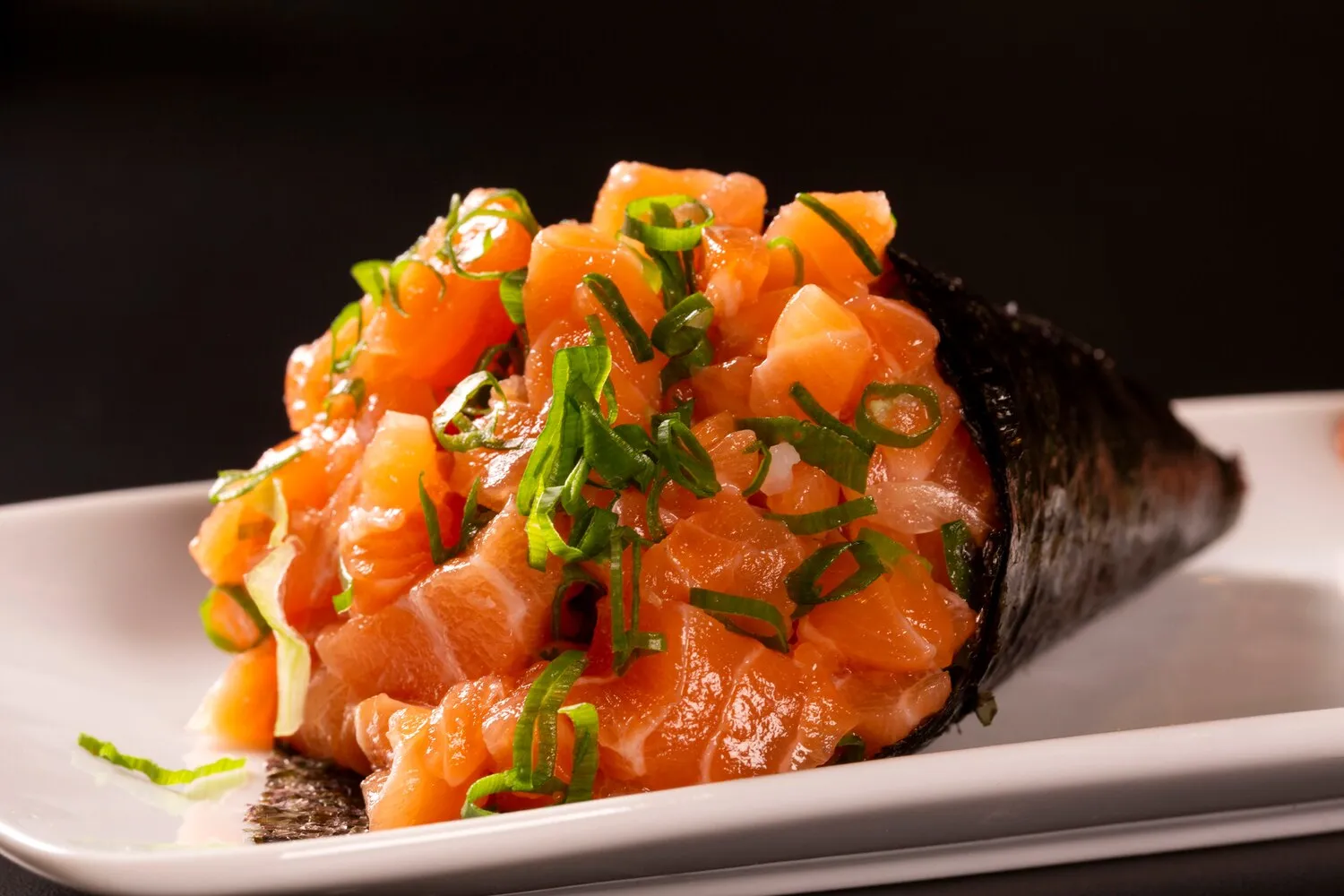
Temaki
Sushi hand roll with various fillings.
Nutrition Facts
* The % Daily Value (DV) tells you how much a nutrient in a serving of food contributes to a daily diet. 2,000 calories a day is used for general nutrition advice.
Don Doh Cozinha Nikkei
Sushi's origins can be traced back to Southeast Asia, where fish was preserved in fermented rice. This technique spread to Japan, where it evolved into the various sushi styles we know today. Temaki, as a hand-rolled and relatively informal type of sushi, likely emerged later as a convenient and customizable way to enjoy sushi outside of formal settings.
Temaki embodies a casual and interactive dining experience in Japanese culture, often enjoyed at home or in informal settings. It encourages sharing and customization, reflecting the importance of communal meals and individual preferences.
Home Gatherings
Temaki is a popular choice for home parties and gatherings, where guests can assemble their own rolls with a variety of ingredients. This fosters a sense of participation and personalization.
Informal Dining
Unlike more formal sushi presentations, temaki is considered a casual and approachable option, suitable for quick meals or social occasions.
Customization
The ability to customize fillings allows individuals to cater to their dietary needs and preferences, making it a versatile dish for diverse groups.
Temaki offers a vibrant and fresh flavor profile, balancing the tangy sweetness of seasoned sushi rice with the savory umami of nori seaweed and the diverse tastes of fillings like raw fish, vegetables, and sauces.
The flavor depends heavily on the fillings used. Common ingredients include fresh, raw fish like tuna (maguro), salmon (sake), and yellowtail (hamachi), along with cooked seafood like shrimp (ebi) or crab (kani). Vegetables such as cucumber (kyuri), avocado, and sprouts provide freshness and texture. Seasonings can include soy sauce, wasabi for a spicy kick, ginger for palate cleansing, and various sauces like spicy mayonnaise or eel sauce for added richness.
Rice Preparation
Use sushi rice, seasoned with rice vinegar, sugar, and salt, for the authentic tangy-sweet flavor and sticky texture that holds the roll together. Ensure the rice is cooled to room temperature before using.
Nori Handling
Use high-quality nori seaweed sheets that are crisp and flavorful. Fold the nori in half lengthwise to create a crease, making it easier to shape into a cone. Be careful not to tear the nori.
Ingredient Placement
Place the rice and fillings on one half of the nori sheet, leaving a small corner uncovered. This allows for a clean seal when rolling into a cone shape.
Rolling Technique
Gently roll the nori into a cone shape, tucking in the fillings as you go. Moisten the uncovered corner with a little water to help seal the roll securely. Serve immediately to prevent the nori from becoming soggy.
Explore additional Sushi dishes and restaurants
Explore SushiDiscover top dining spots and culinary experiences in Barueri.
Explore BarueriLearn more about the food culture, restaurant scene, and culinary heritage of Brazil.
Explore Brazil